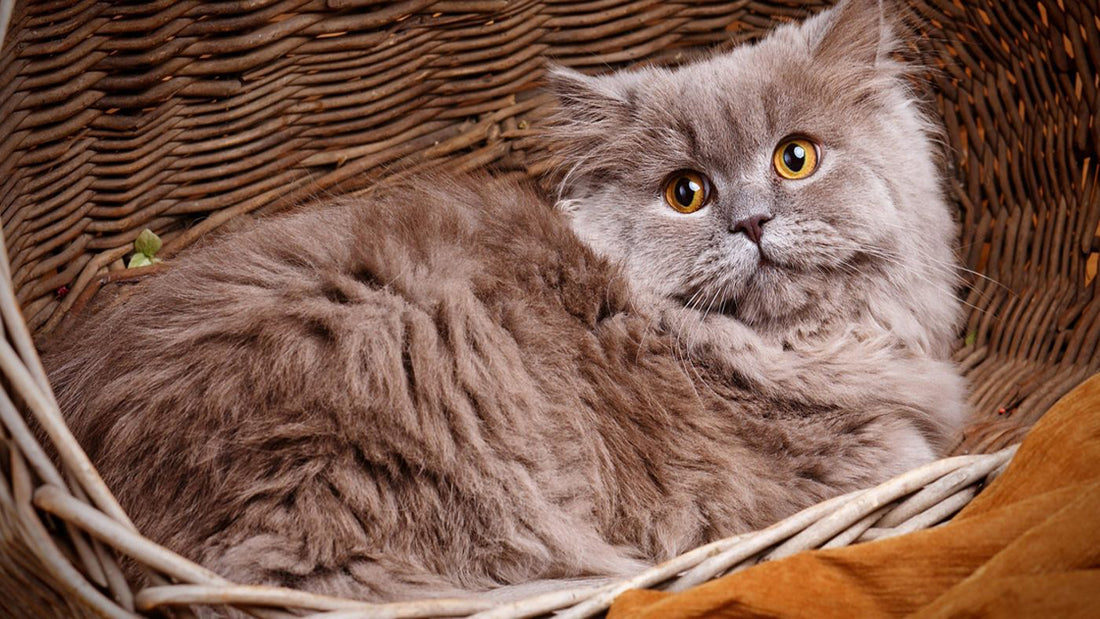
Top Tips For Cat Grooming At Home
Share
Whether you’re a cat owner or not, then the chances are you’ll be aware that cats are naturally very tidy animals.
They tend to regularly groom themselves by licking every part of their body clean with their tongue.
This habit of tongue-bathing has a number of benefits for cats:
- Promotes better blood circulation
- Gets rid of dead skin cells
- Removes excess and dead hair on their coat
- Tones their muscles
- Keeps fur soft and clean
One of the advantages of owning a pet cat rather than a dog is that your cat should happily groom themself. However, they will still need your help to make sure they look and feel their very best.
If you’re wondering how to groom a cat at home, check out our top cat grooming tips for pet owners below.
Remember, the key to successful pet grooming for cats is to make sure you have high-quality grooming tools to hand. You can explore our full range here.

DakPet’s advice for grooming your cat
1. Brushing your cat’s fur
Depending on the breed, your cat may either have long or short hair. Make sure that you brush your cat’s coat well enough to promote proper grooming.
For cats with short hair, use a brush with soft bristles so that the skin won’t be scratched or hurt in the grooming process.
Make sure you use soft, gentle strokes while brushing. This will make the experience a lot more relaxing and enjoyable for your pet. They’ll be much more likely to let you groom them properly, and you might even get them purring!
After brushing the coat with a comb, you can finish the job by wiping the fur with a dry, soft and clean piece of cloth. This will help to maintain the shine on your cat’s coat.
Remember to brush the hair around the face with a smaller comb or a toothbrush, and avoid the eye and whisker area when brushing.
Brushing your cat's fur on a regular basis will help keep their coat shiny and healthy, and will also give you and your pet an opportunity to spend time bonding with each other.
How to groom a long-haired cat
Bear in mind that long-haired cats will need more brushing time than cats with shorter hair. Make sure you plan in plenty of time to groom your cat properly if they have long hair, as it can take some time.
For grooming a long-haired cat, you’ll want to have several vital tools to hand. An all-in-one cat grooming bundle is a great place to start.
Firstly, start by grooming your pet with a wide-toothed comb that is specially designed for cats. This should initially remove knots and tangles from their fur.
Afterwards, you can use a fine-toothed comb to work out the smaller knots in the fur and eliminate more stubborn knots.

2. Bathing your cat at home
Cats don’t often require bathing because they take good care of themselves when it comes to grooming.
However, pet owners know that every so often you will have no choice but to give your cat a bath - and it can be an unpleasant and stressful experience for you both.
There are only a few circumstances in which you should definitely wash your cat. If their coat is excessively dirty or there is a substance on their fur which could cause them harm, you will need to give them a thorough clean straight away.
You can find a list here of some of the most common household items that can be harmful to cats.
Another instance where you need to bathe your cat is if you know or suspect that fleas, ticks, or lice are clinging to their skin.
This helpful guide will show you how to bathe your cat by following a few simple step-by-step instructions.

3. Cleaning the eyes and ears.
The eyes and ears are the most sensitive areas in your cat’s body, which means you need to be particularly careful when cleaning them.
Residue can sometimes build up in the corners of your cat’s eyes. The best and safest way to remove this is by dampening a cotton wool ball and using it to gently wipe the residue away.
Always make sure you wipe in a direction away from the eyes and not towards them, as this will decrease the chances of you accidentally pushing debris into the eye or transferring bacteria onto the eyeball.
When it comes to grooming your cat’s ears, be aware that it is common for cats to suffer from issues related to wax buildup. That means it’s important you don’t skip the ears when grooming your cat.
Removing excess wax can help to maintain your cat’s health and prevent infections. However, usually simply wiping away any wax on the outer ear with a moist cotton wool ball will be enough to help them keep clean.
The inner ear is a very sensitive area, and most cats never need help with cleaning this part of the body. Trying to clean the inner ear may irritate the ear canal.
If you’re tempted to do anything more than a light cleaning of the outer ear, we recommend you speak to a professional vet first.

4. Keeping your cat’s paws clean.
Cats are in the habit of scratching surfaces, which can be a source of frustration for cat owners. Keeping their nails trimmed is an effective way to reduce this common problem.
The key to trimming your cat’s nails safely is to make sure you use a high-quality nail trimmer with a safety guard.
If in doubt, make sure you ask your veterinarian for the proper way to trim your cat's nails so as not to hurt them in the process.
If you find that your cat exhibits a not-so-healthy clawing habit, you may go for the option of declawing your cat.
This is a surgical procedure where the nails are permanently removed so that they will not grow back.
However, you should still ask your vet's advice if you want to go for declawing because it will cause your cat to lose their natural defense mechanism.
A better and kinder option is to regularly trim your cat’s nails and have them use a wooden post for scratching or use crate-training techniques to prevent them from clawing at your most treasured possessions.
We hope you’ve enjoyed reading our top tips for grooming your cat at home.
Follow these tips on how to groom a cat at home and make time in your busy schedule to groom your cat. Doing so will help to ensure you have a healthy and happy cat - which means a happy owner too!
You can explore the full DakPets cat grooming range here.
